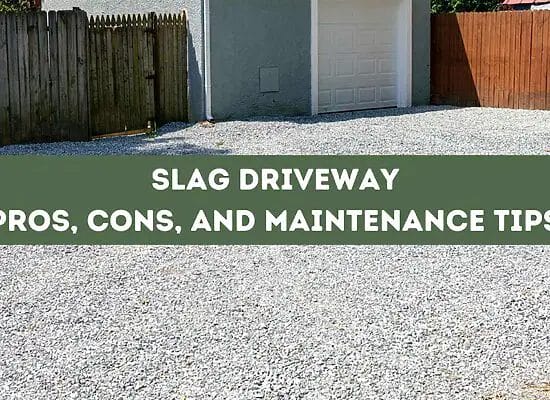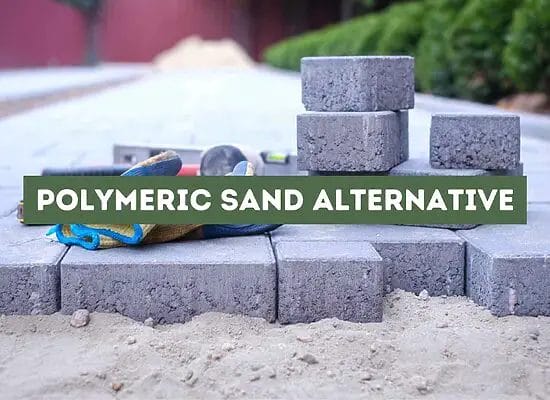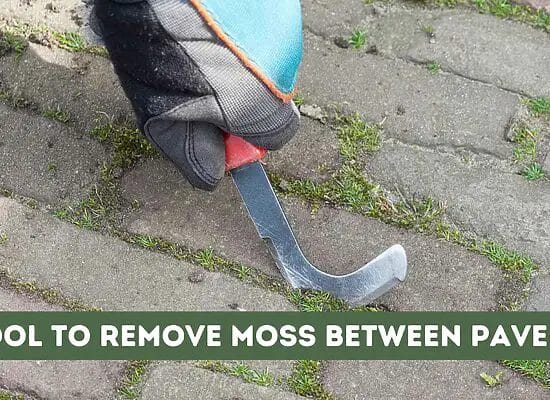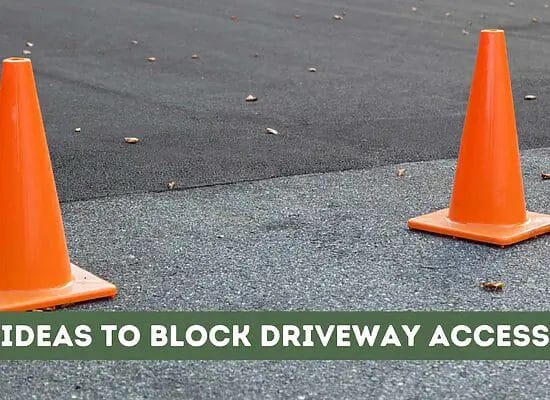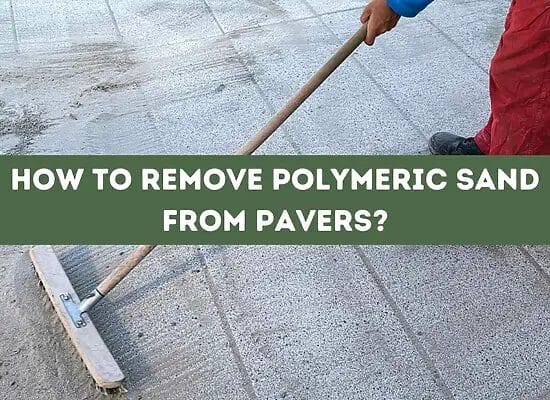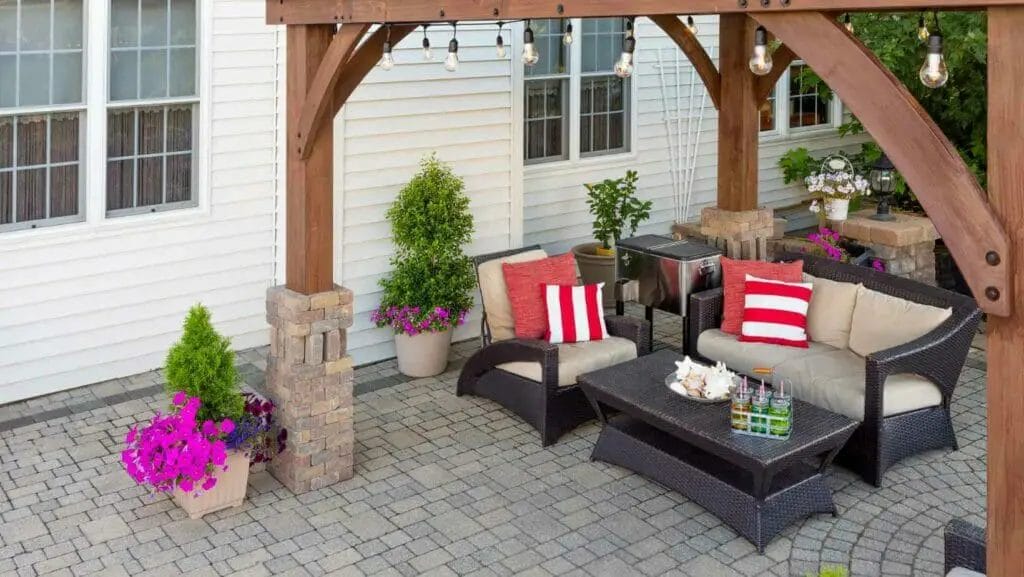
Often when we have made the decision to have a gazebo on our property, it arrives pre-made, and all we need to do is fit it. After the gazebo has been erected, we usually choose to place it in an area that is nicely paved so it is clean to walk to and from.
After spending a lot of money purchasing the gazebo, we want to make sure that it will still be there after strong winds and storms. In this article, we are going to look into how to anchor a gazebo to pavers and at the various ways to do it so that it is secure and safe for everyone who uses it.
Key takeaways:
- Anchoring a gazebo to pavers provides several benefits, including preventing damage from strong winds and storms and minimizing shakiness caused by loose sections.
- There are three common methods for anchoring a gazebo to pavers: using concrete anchors, using concrete or steel weights, or digging foundation holes and concreting the legs of the gazebo.
- Materials needed for anchoring a gazebo to pavers include a power drill, masonry drill bit, concrete sleeve anchor or rawl plug/concrete screw, hammer, socket or spanner, measuring tape, and spirit level.
- The step-by-step process for anchoring a gazebo to pavers involves positioning and marking the gazebo’s placement, drilling holes through the pavers, fastening the leg brackets to the pavers, and attaching the gazebo legs to the leg plates.
- Alternatives to anchoring a gazebo to pavers include using weights or pouring concrete footings or foundations.
- To maintain a securely anchored gazebo, regularly check the screws connecting the legs to the leg plates and secure any loose boards or guttering before storms.
Benefits of Anchoring a Gazebo
There are many benefits of anchoring your gazebo securely. They are:
To prevent strong winds and storms from blowing the gazebo over – this can cause a lot of structural damage, which is expensive to fix. Sometimes the blown-over gazebo can damage furniture which sits inside it or other precious items nearby.
Most gazebos are made from a number of individual sections which are bolted together. Over time these sections can become loose. If the gazebo is not securely fixed to the ground, it will amplify the shakiness of the gazebo.
If your gazebo is not secured to the ground. In that case, it can be accidentally knocked and moved around by adults or children playing close to it. If this happens often enough, the gazebo can soon be knocked away from the paving area into less desirable locations.
Types of Gazebo anchoring
There are normally three ways to anchor your gazebo to the ground securely.
Concrete anchors.
With this method, the metal leg plate is fastened to pavers by drilling a hole through them and screwing a specially designed metal bolt into the hole. The number one thing to check here is that the pavers have been cemented into place. If your pavers are just sitting in sand, that one paver is the only thing holding your gazebo down, which is not enough.
Using concrete or steel as weights.
Sometimes people choose not to fasten the leg plate of their gazebo to their pavers or build concrete foundations. Instead, they add weights to the legs of the gazebo. This is usually done by setting the leg of the gazebo inside a decorative pot and then filling concrete into the pot.
Although this seems easy, it is not really any less work than fixing to pavers or pouring foundations into the ground. I would only consider this for small gazebos or as a temporary measure.
Digging foundation holes and concreting the legs of the gazebo
This is the best way to fix a gazebo to the ground. The concrete can stop at ground level, and the pavers can be built around the legs for a really neat, professional finish. The largest gazebos are anchored in this way. Do it right the first time.
Materials Needed for Anchoring a Gazebo to Pavers
I will list the materials needed to secure a gazebo to pavers. If your gazebo will be placed on grass, I have written another article about it here.
- A power drill with hammer action;
- A masonry drill bit the corresponding size of the concrete sleeve anchor or rawl plug/ concrete screw;
- Concrete sleeve anchor or rawl plug/ concrete screw;
- A hammer;
- A socket or spanner the size of the concrete sleeve anchor/screw;
- A measuring tape to check the distance between the legs is correct;
- A spirit level to check how plumb the legs are.
Anchoring a Gazebo to Pavers Step-By-Step Process
Step 1: First, you need to position where the gazebo will be placed. When you are happy, you should mark the ground where the legs need to go. Check all the legs are plumb before marking the leg brackets – the legs can splay on gazebos, and if they are not plumb, it will look horrible.
Step 2: After marking where the legs bracket holes need to be drilled, move everything back out of your way and drill the holes through the pavers.
Step 3: Now fasten the leg bracket to the pavers using your desired fixing. Sleeve anchors will have the best hold in precast pavers. My second choice would be large nylon rawl plugs with stainless bolt head screws.
I would not advise using concrete screw bolts because, as the name suggests, they are only effective in poured concrete areas. Precast pavers are not the same as concrete, and they will bust internally easily using concrete screws.
Step 4: Now that the leg brackets are securely fastened to the pavers, you can place the gazebo legs onto them and fasten the legs to the leg plates. Job done.
Alternatives to secure a Gazebo to pavers
As I mentioned above, you can use weights to hold a gazebo to pavers. Still, I would only do this if the pavers were not cemented in, and I don’t think I would even use weights then.
If I had a paved section and the pavers were not cemented in, I would dig a hold in the ground and concrete in a solid footing or foundation. Then I would fit my leg plate to the concrete, guaranteeing that the gazebo is going nowhere.
A tip if you do decide to dig and pour concrete foundations for each leg. If you only fill the concrete to ground level, you can then cut and insert your pavers back around the legs neatly. This way, you won’t see the concrete foundations – the legs will just appear up through the pavers.
Tips for maintaining a securely anchored Gazebo
After you have securely fastened your gazebo, the amount of maintenance it needs will be pretty small. The fixings holding the leg plate to the ground are highly unlikely to become loose.
It may be that the fixings from the leg to the leg plate become loose in the first months after installing it. Simply check the screws are tight once a month until you are confident they are fully tightened.
Some people have felt the need to cover their gazebo when a weather warning has been issued – I would strongly advise you not to cover your gazebo with any type of cover.
By adding a cover over your gazebo, you are increasing the force the wind will have on it. Instead of the wind blowing through it, the cover will be catching the wind, adding more stress to your anchor points.
What I would do before a storm is walk around the gazebo and check there are no loose boards or any guttering hanging off and fasten them securely. If you don’t have time, remove them to fix back on at a more convenient time.
FAQ: When Anchoring A Gazebo To Pavers
Can I anchor a gazebo without drilling?
Yes, you can anchor a gazebo without drilling. You can use weights attached to the bottom of each leg, generally by setting the leg into a decorative pot and filling it with concrete. Leave a few inches clear at the top of the pot to decorate it with plants etc., rather than looking at unsightly concrete.
Can a gazebo be anchored to a wooden deck instead of pavers?
Yes, a gazebo can be anchored to a wooden deck. To anchor your gazebo to a wooden deck, screw the metal leg plate to the wooden boards of the deck and then fasten the legs to the leg plate.
What is the best anchor type for anchoring a gazebo to pavers?
The best type of anchor to use on pavers is a concrete sleeve-type fixing. The metal sleeve on the outside of the anchor fixing applies pressure evenly to the pavers. Some pavers can be made of a crumbly type precast mix which some fixings can bust easily – causing the anchor to pull free more easily.
Will sandbags hold down a gazebo?
Yes, sandbags will hold down a gazebo, but depending on the size of the gazebo, you may need a lot of them. Sandbags are unsightly, though, and they can introduce a trip hazard around the legs of the gazebo. I would only consider using sandbags in emergency situations if the gazebo was not securely fastened.
To recap, we discussed that although there are many ways to anchor your gazebo to pavers, you could anchor it using weights by directly drilling anchors into the pavers, or you could pour concrete footings or foundations under each leg.
Anchoring a gazebo through concrete foundations is the most secure way. Remember to do a quick walk-around of your gazebo before the stormy winter sets in to ensure everything is securely fastened.



